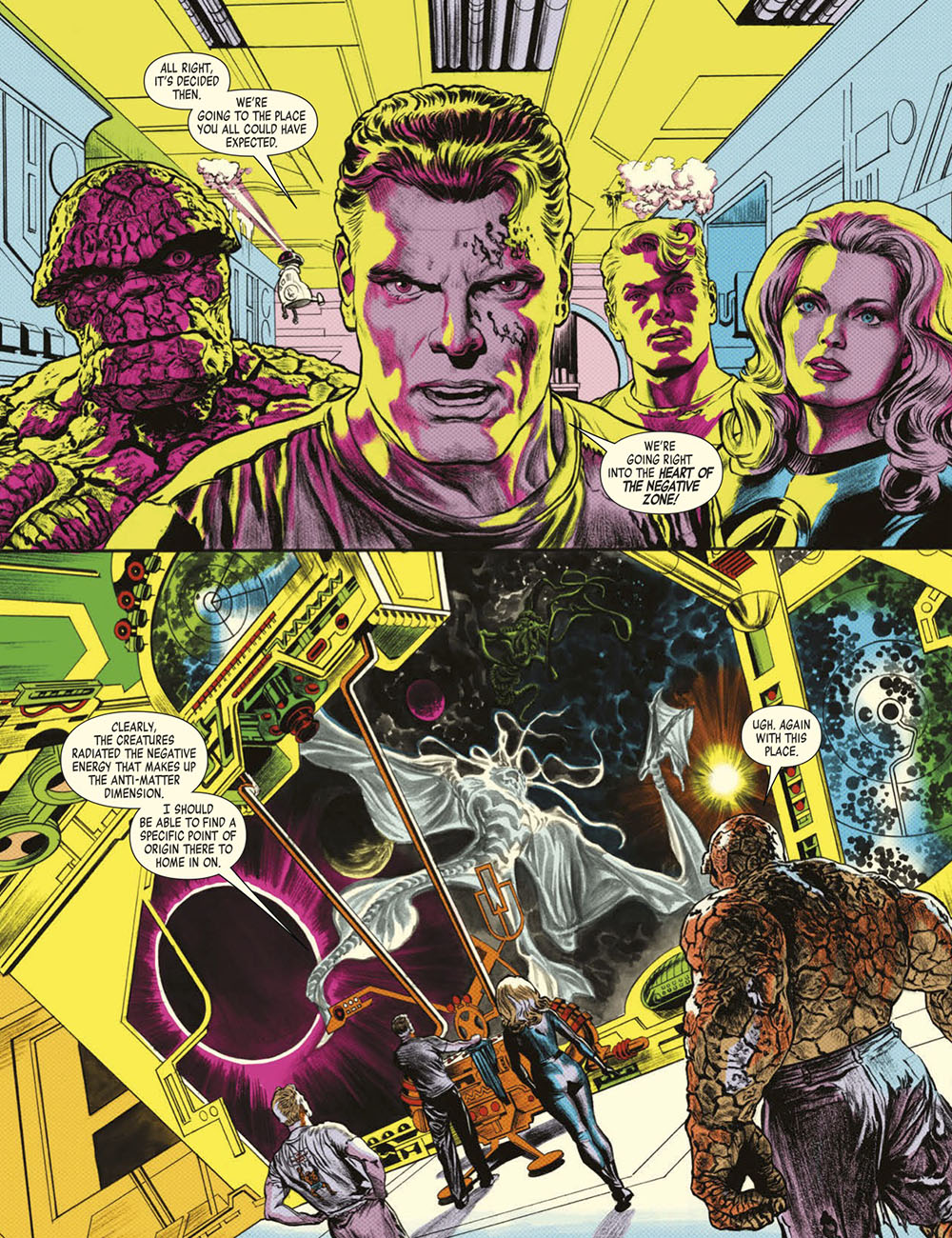
Courtesy of Abrams ComicArts

Legendary comic artist Alex Ross returns to drawing long-form sequential art for the first time in over 15 years with Fantastic Four: Full Circle, out in September from Abrams ComicArts’ newly launched imprint, Marvel Arts.
The book is marking several firsts. It’s the first time Ross, who gained fame with his groundbreaking 1990s comics miniseries Marvels and Kingdom Come, for Marvel and DC respectively, has done a straight-up graphic novel. It’s also the first time that Marvel has licensed out its characters to another publisher, in this case Abrams, in more than 40 years.
And it’s also the rare occasion where Ross takes a step back from the painted realism style that made him famous.
“I wanted to present a version of the Fantastic Four as close to a Jack Kirby style he envisioned for the series as he created the characters,” Ross tell The Hollywood Reporter. “His style informed the first 10 years of their existence and it’s the shadow all artists have been working under for these last 60 years.”
Kirby was cartoony, bold and muscular, at times over-the-top and brimming with mid-century, space-age design combining the bright colors of comic publishing at the time with occasional collage work to produce what was termed in the 1960s as Marvel Pop Art.
“I thought there was a way to connect with the Pop Art of the time period if I changed what I did, and presented that style and not my traditional painted style.”
The story uses as its jumping-off point the incidents recounted in the now-classic “This Man… This Monster!” story told in 1961’s Fantastic Four no. 51. In the new story, the Fantastic Four’s headquarters, the Baxter Building, faces an intruder alert, setting the heroes off on an adventure that takes them into the Negative Zone, an alien dimension composed of anti-matter.
“It seemed very suitable for the material,” says Ross. “To do the pop art aesthetic right, you couldn’t do it with over-rendered, over-illustrated work. I needed to boil down what I do to a more graphic degree. Realism is my stock and trade, but you can still get that within a more high-contrast representation.”
Ross came by the book in his own circular fashion. In the early 2010s, the Fantastic Four comic was quietly put on a hiatus due to Marvel’s disputes with 20th Century Fox over failed movie and screen rights. When he heard the title was coming back, Ross put his hat in the ring to be involved in a relaunch. Others had beaten him to the punch, however, and he was ready to let his dream go. Enter Abrams, which offered him a chance to do a story without the constraints of a month series.
“I couldn’t get the main title back then, but I could carve this one-of-a-kind take,” he says.
The 64-page graphic novel is the culmination of months and months of work. Ross produced about 10 pages a month, with inking taking a day and half for every page. He maintained a disciplined schedule while juggling his monthly painted cover assignments.
The book is dynamic and vibrant, with an unmistakable Kirby influence in the mood and tone. But there are other inspirations, too, particularly Neal Adams, the classic Batman and X-Men artist who passed away this past spring.
“Everything you see in my work is the DNA of Neal Adams affecting my generation,” says the artist. “Whether or not I wanted to, I couldn’t not be a transmission of that influence. Neal Adams’ take on how to do dynamic realism, it changed everything in comics.”
The book is hitting stores as interest in the Marvel title and heroes is crescendoing. Marvel Studios recently set a date for a new Fantastic Four movie and is close to sealing a deal with Matt Shakman to helm it. (Watch for any possible news at September’s D23 convention.) And the Fantastic Four comic is being relaunched once again by the publishing division in November.
Full Circle hits stores Sept. 6 in an oversized format similar to the graphic novels Marvel published in the 1980s to better showcase the art. It will retail for $24.99.
“There’s definitely a risk involved in varying what I do,” admits Ross regarding the art on the new book and how readers may react to it. “But my greatest goal here was to impress myself.”
Consider us impressed.
Check out a sequence from Fantastic Four: Full Circle below.

Courtesy of Abrams ComicArts

Courtesy of Abrams ComicArts

Courtesy of Abrams ComicArts

Courtesy of Abrams ComicArts